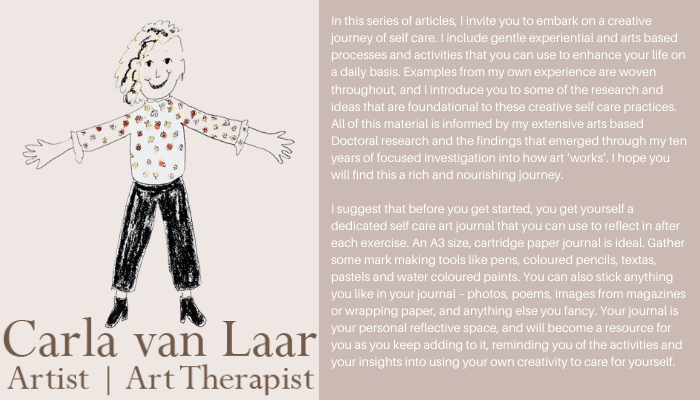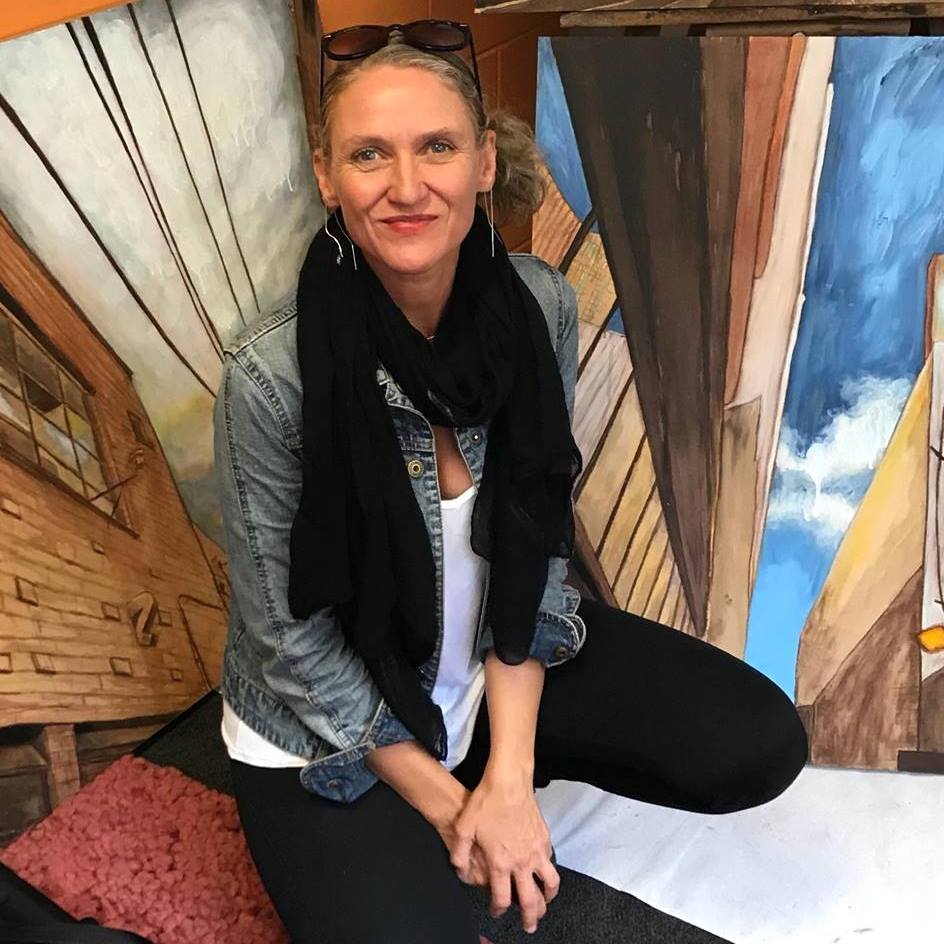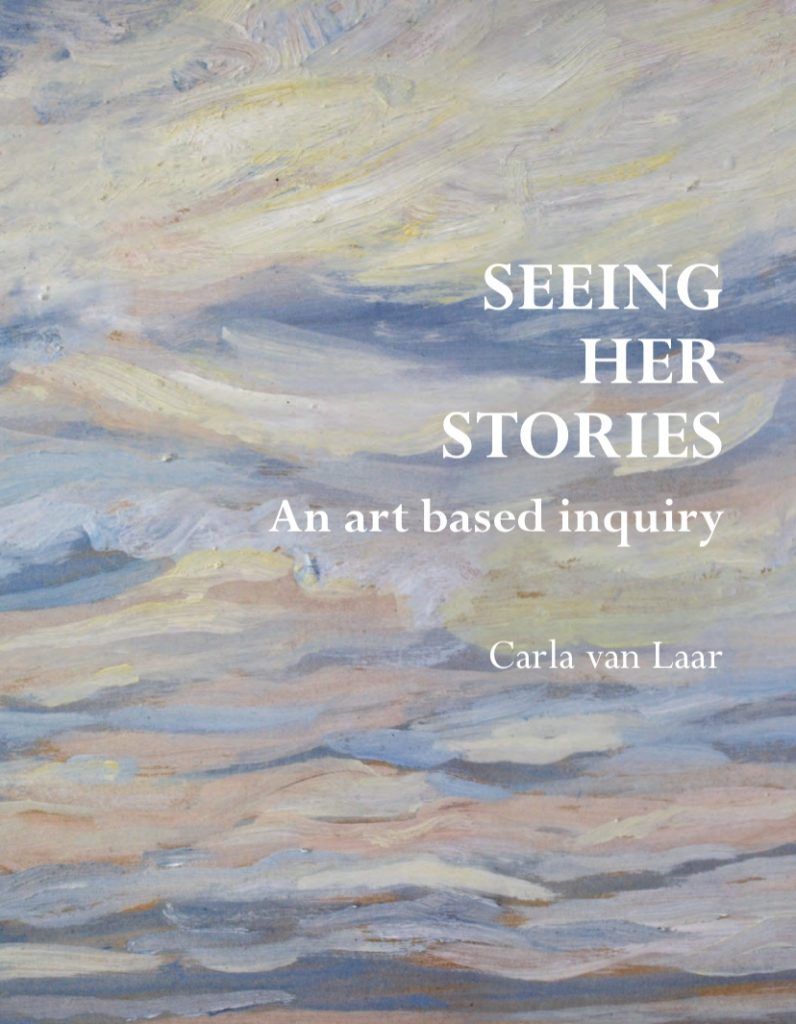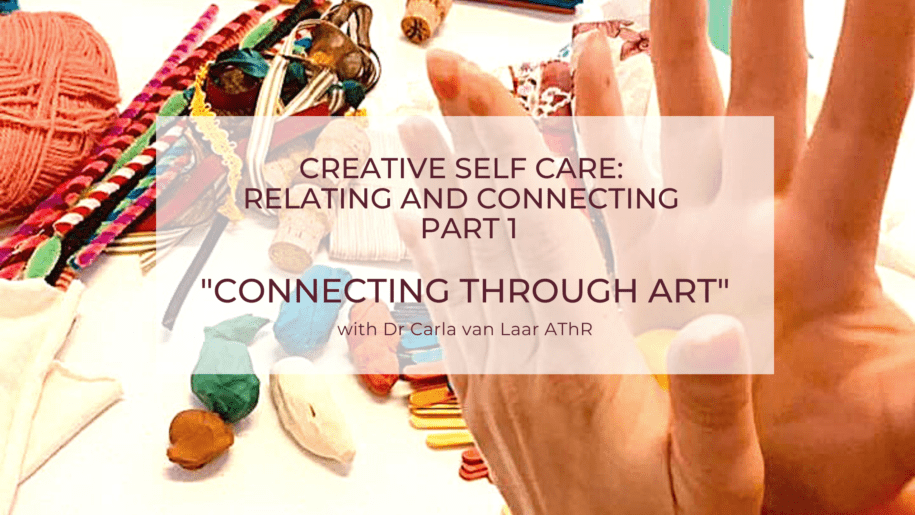With Dr Carla van Laar AThR
Feature image credit Carla van Laar
In this article I introduce the themes of relationship, connection and co-creation as I investigated them in my Doctoral research. I invite you to engage in a “Self-Collage” activity as a way of connecting the various parts of yourself.

…
Relating, Connecting and Co-creating
The term “relationship” can be used to describe the way in which people or things are connected, as well as the way in which people or groups relate to each other (relationship, n.d.). Some kind of connection is implied in the word relationship. Accordingly, the word “connection” describes “a relationship in which a person or thing is linked or associated with something else” (connection, n.d.). It is difficult to describe relationship without connection, or connection without relationship – they are mutually intertwined.
“Creation” denotes the actions or processes through which something is brought into existence, and sometimes refers to the making of the entire universe (creation, n.d.). When coupled with the prefix “co-”, to make the word “co-creation”, the actions and processes of bringing something into existence are done with, together, or jointly with others – the creating happens in connected relationships and interactions (co-, n.d.).
The themes of relationship, connection and co-creation are intertwined. When they are explored in art therapy literature they are often mentioned together in ways that mirror the intertwining threads of Crossley’s (1996) fabric of intersubjectivity.
From this perspective, a variety of relationships between people, materials, art works, contexts, values, discourses and stories are seen as important, interconnected and in constant states of co-creation and becoming…
~van Laar, 2020
…
Connecting through art:
Self Collage
In this exercise, I invite you to connect the various parts of yourself through the act of collage.
You can do this exercise in your art journal.
First of all, you will need to collect some ‘found images’.
There are plenty of ready-made images available in magazines, second hand books, postcards, calendars, special occasion cards – even your own photographs and artworks that you are not overly attached to can be used. Another way of collecting ready-made images is via the internet, where you can browse for images that you connect with, and print them out.
You might also like to gather some found objects,
like fallen leaves, flowers, old jewellery, and small objects like buttons, or other memorabilia.
Thirdly, you can use textiles and fabric as part of your collage materials.
Old clothing that you don’t wear any more, scraps of fabric from other projects, items sourced from second hand shops, balls of wool and twine… all of these can be wonderful to use in your collage.
You will also need scissors and glue.
PVA glue and a small paintbrush work well. Be sure to have some water handy to place your paintbrush in when you are not using it so that it doesn’t dry out.
…
When you have assembled everything you need, let your eyes drift over all the materials. Pick things up and handle them, touch them, let your mind wander and drift freely as you do this.
Next, open up your journal and look at the blank page.
Ask yourself,
“What makes me me?”
You have many different parts to you, and I invite you to let them all come together on this page through making the collage.
- There might be parts of you that are relationships to other people, like friend, or carer, or child, or parent.
- There might be parts of you that are related to your work or study, like physiotherapist, sales person, or student of performing arts.
- There might be parts that relate to your social activities, interests and hobbies, like team member, dancer, activist, gamer, hiker, blogger, baker, sewer or cyclist.
- There might be parts that are raw and tender, parts that are strong and resilient.
- There might be parts that are childlike, parts that are playful, parts that are serious, parts that are wise.
- There might be parts that you are not so familiar with, and parts that you know very well.
There is room on this page for all the different parts of you.
Start to select materials and arrange them, you might want to cut them or tear them to the right size and shape.
You can decide when you are ready to start gluing all the various items down on the page, and you will also know when you are finished.
Let the process guide you through, until you come to a natural close.
Questions for reflective journaling:
What was it like doing this process?
How did you select what to use, and why?
What have you learned about what makes you you?
What other insights have emerged for you through this process?
…
References
van Laar, C. (2020) Seeing Her Stories. Carlavanlaar.com, Brunswick, Australia.

Dr Carla van Laar
Artist | Art Therapist
Master of Creative Arts Therapy
Doctor of Therapeutic Arts Practice
Registered Supervisor and Professional Member ANZACATA
Carla van Laar is a painter and therapeutic arts practitioner from Australia. Born in Brisbane, Carla is first generation Australian on her Dutch grandparents side, and 7th generation through her maternal bloodline who were mostly English and came to Australia in the early colonisation of the 1800s. Carla currently lives and works in Victoria, residing between Wurrundjeri country in Melbourne, and Boon Wurrung country in Inverloch, paying deep respects to the First Peoples of the Kulin Nations whose land was never ceded and will always be Aboriginal land. Identifying as a cisgender woman, Carla is passionately disinterested in socially constructed identities that disempower anyone. Carla has over 25 years’ experience working with people and the arts for health and well-being in community organisations, justice, health and education contexts.
Carla’s first book “Bereaved Mother’s Heart” was published in 2007 and broke social taboos about maternal grief. From 2008-18 she established and ran an independent art therapy studio and gallery in Melbourne. Her Doctoral research “Seeing Her Stories” continues the mission to make women’s stories visible, through art.
Carla has lectured and supervised Art Therapy students at RMIT, MIECAT and currently the IKON Institute. She is a practicing artist and in 2018 received an Artist Fellowship at RMIT’s creative research lab, “Creative Agency”. She insists on being part of a creative revolution in which art re-embodies lived experience, brings us to our senses, makes us aware of the interconnectedness of all life and is an agent of social change.
Carla’s new book “Seeing her stories” presents her research into making unseen stories visible through art, and is available to read for free online here or purchase a hard copy of the full colour hard cover coffee table book here.



Leave a Reply